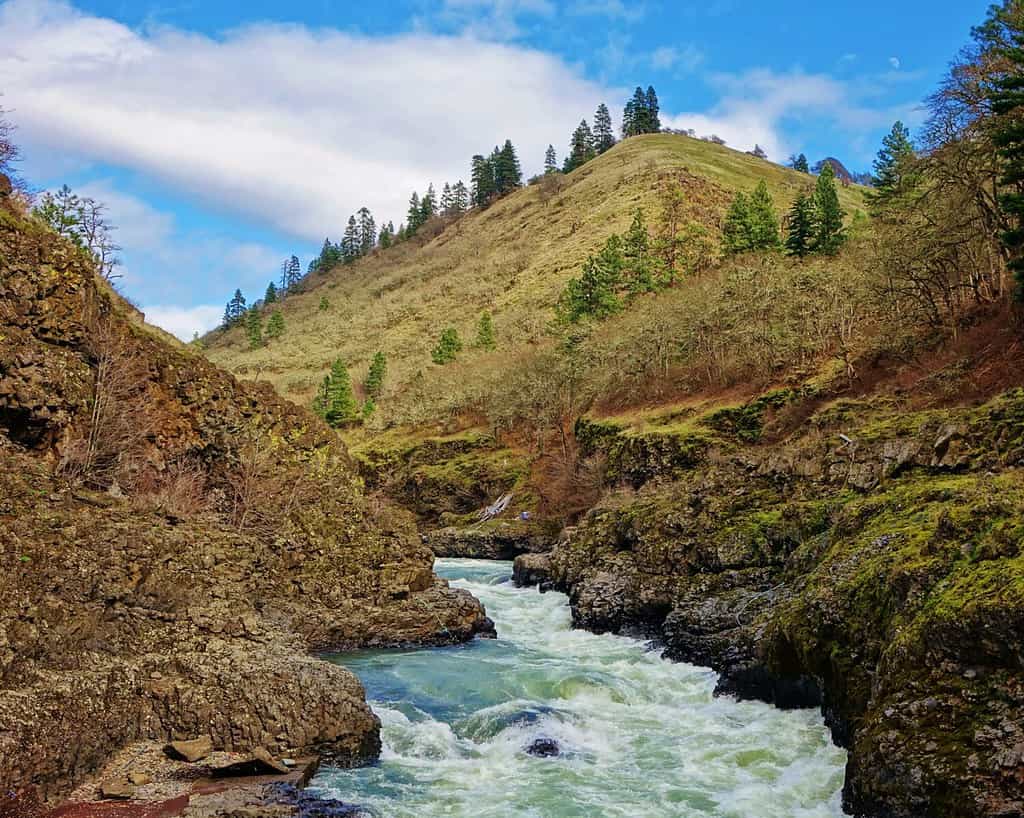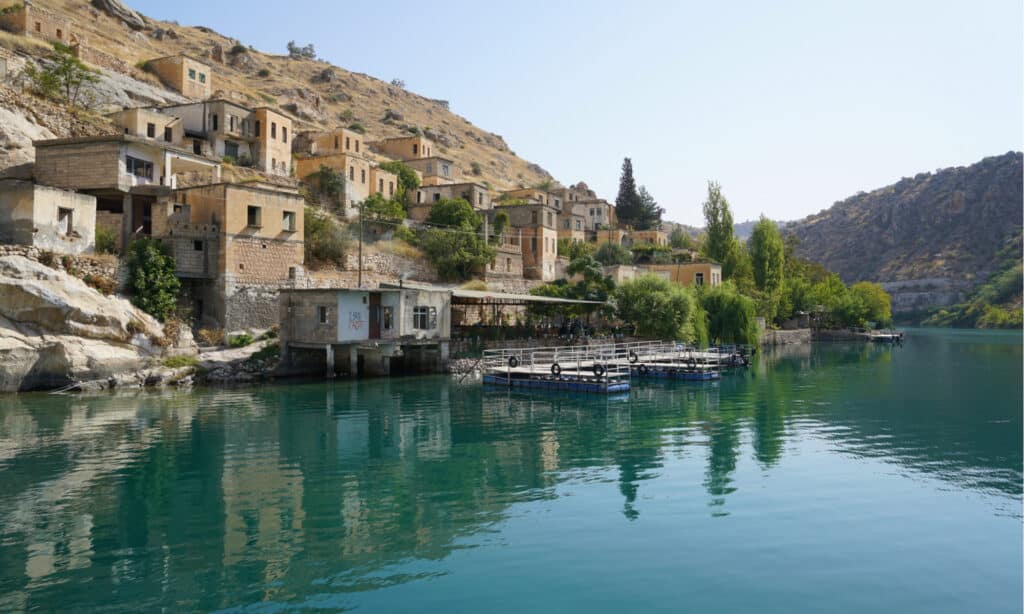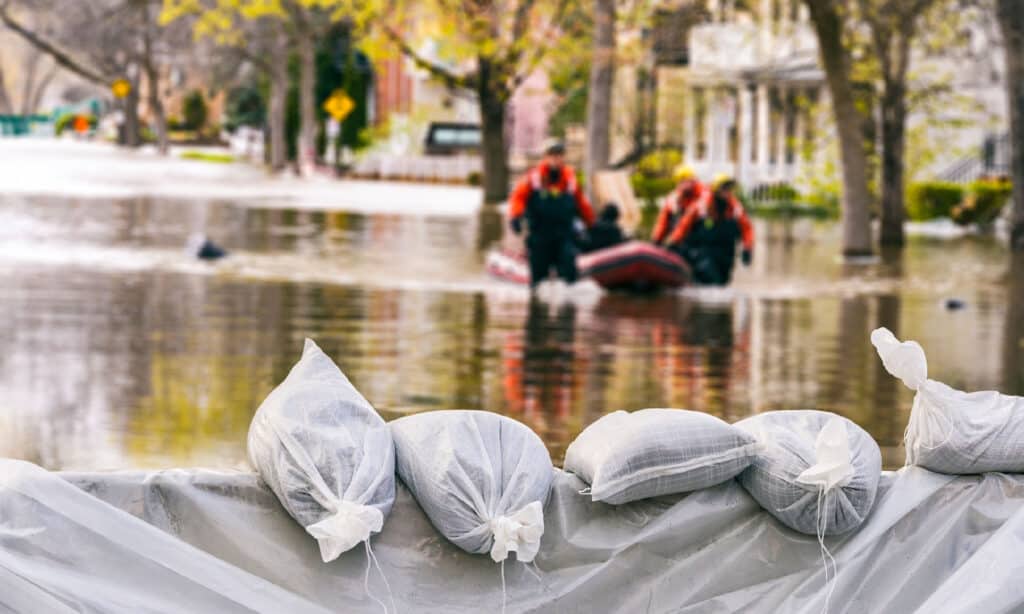All over the world people tell the story of a Great Flood. It’s a story told in the Bible, the ancient Mesopotamian epic Gilgamesh, and in African, Asian, and Native American folktales. If similar stories are part of so many cultures, is it possible that such a flood actually happened? And if so, can we find evidence of it? Read on and decide: was the legendary Great Flood real?
Flood Stories Around the World
There are hundreds of flood stories around the world that often share common elements. Below are a few examples:
The Epic of Gilgamesh

This historic tablet of the Epic of Gilgamesh includes the story of Utnapishtim.
©Osama Shukir Muhammed Amin FRCP(Osama Shukir Muhammed Amin FRCP(Glasg), CC BY-SA 4.0, via Wikimedia Commons)/Wikimedia Commons – License
The Epic of Gilgamesh is a Mesopotamian composition dating to about 2100 BC. It includes the story of Utnapishtim. Warned by the god Enki of an impending flood, he builds an enormous boat, taking his family, animals, and grain on board. After the deluge, the ship comes to rest on a mountain. Utnapishtim sends out a dove, a swallow, and a raven before leaving the boat and offering a sacrifice to the gods.
The Bible

The story of Noah and the flood is a well-known part of the Hebrew Bible.
©yosefus/Shutterstock.com
In the Jewish Bible, the flood story is found in Genesis 6-9. In it, God is grieved by the evil of humanity. He instructs the last righteous man, Noah, to build an ark (or large boat) in order to rescue himself, his family, and every species of animal. A flood destroys the world, and the ark settles in a mountainous area. Noah releases a raven and two doves to determine the conditions outside the ark. After exiting, he offers a sacrifice.
The Satapatha Brahmana

Hinduism teaches that a fish helped save the first man from a great flood.
©Vladimir Wrangel/Shutterstock.com
One of the Hindu flood stories is found in the Satapatha Brahmana, dating to the 6th century BC. The first man, Manu, does a kind deed for a fish. As it turns out, the fish is an avatar of Vishnu who then warns Manu to build a large boat to escape a coming deluge. During the flood, the fish guides the boat to a safe resting place on a mountaintop. Manu then offers a sacrifice of gratitude.
Native American Myths

Native Americans of different tribes tell stories of a primordial Great Flood.
©iStock.com/Planet_Dirt_Project
Many Native American tribes told flood stories as well. In the Ojibwe and Chippewa versions, the Great Spirit became angry with people and sent a flood. One man named Waynaboozhoo survived by making a log raft for himself and some animals. After floating around for a month, the man decided he would have to rebuild the earth himself with mud from the old world. Aided by a duck, he molded a bit of mud into a new world.
How Did People Get These Stories?
How did people from widely separated parts of the world arrive at similar flood myths? Some common suggestions are:
- Early people witnessed large floods and created and shared legends about them with others as they migrated and traded.
- The global flood was a real event. All human beings descended from the family that survived on a boat, and the story was handed down to all of their descendants.
- Believers in a religious tradition teach that God or the gods revealed a flood story to their ancestors.
Geological Evidence for Great Floods
It’s not difficult to find geological evidence for enormous floods in various parts of the world. Here are a couple of interesting examples:
The Black Sea Flood

The shallower waters of the northern part of the Black Sea were once inhabited fertile river bottom land.
©GizemG/Shutterstock.com
Sediment samples indicate that the Black Sea flooded with water from the Mediterranean around 5,600 BC. Melting ice age glaciers raised the sea level until a waterfall spilled over the Bosphorus in a waterfall 200 times bigger than Niagara Falls. As the shoreline rose by a mile a day, people living in lowlands around southern Ukraine had to migrate to safety, taking dramatic flood stories with them.
The Channeled Scablands

Southern Washington State shows evidence of heavy erosion from flooding at the end of the last Ice Age.
©Dan Lewis/Shutterstock.com
The Channeled Scablands is an area of southern Washington and northern Oregon that has been scoured by repeated floods. The result is a rippling, heavily eroded landscape with deep canyons and large misplaced boulders. The area flooded repeatedly as glaciers melted and formed enormous lakes, which sometimes catastrophically broke through ice dams. The last great flood there happened 14,000-18,200 years ago.
Geological Evidence for the Biblical Great Flood
Those who believe the Biblical Great Flood was a real event fall into two main camps: those who think it was a world-encompassing flood, and those who think it was a regional flood in Mesopotamia.
Evidence for a Global Flood

The Grand Canyon is a particularly good place to study the rock strata of the geologic column.
©ipanacea/iStock via Getty Images
Proponents of the Global Flood scenario point to the geologic column as evidence of a global flood. According to this theory, the various layers resulted when sediments, animals, and plants of different buoyancies and compositions were sorted and settled in layers below turbulent floodwaters. Shells and other fossilized marine remains found in deserts and on mountaintops also suggest that water once covered the highest mountains.
Alternatively, many point to the fact that the geologic column shows different climate conditions at different layers. These include tropical seas, forests, and arid deserts. It was not all laid down in flooding conditions, and no one layer of deep flood sediment matches up in the strata all over the world. Most scientists think that marine fossils found at high elevations are the result of tectonic activity that gradually turned seabeds into elevated land. A more detailed explanation of this viewpoint is available from the National Center for Science Education.
Evidence for a Local Flood

The Euphrates River has flooded many times in history, sometimes catastrophically.
©Sadik Yalcin/Shutterstock.com
Other researchers think Middle Eastern stories of the flood might have originated from historic floods in the Tigris-Euphrates River valley. In fact, geological studies in southeastern Mesopotamia have shown sediment layers from multiple local floods throughout history, including one layer nearly 10 feet thick! This enormous flood has been dated to 3,500 BC.
How could a local flood be reconciled with the language of the biblical story, for those who hold it to be a sacred text? “Earth” can be understood as “land.” The flood covered all the land for as far as the eye could see. Building a boat to save animals could have been a vivid prophetic warning to local people to repent and escape God’s judgment. The story is written in a literary structure called a chiasm, centered on the idea in Genesis 8:1 “God remembered Noah.” This main theological point, which reassures believers of God’s care, stands whether the flood was local or global.
Take-Aways for Everyone

Natural disasters remind us to pull together as humans sharing the same planet.
©iStock.com/Marc Bruxelle
Stories of the Great Flood demonstrate that folklore and religious texts give us clues to possible real events of prehistory. They also remind us how precarious life is on our planet. We can be encouraged to work together to preserve all life. Finally, they show how faith can help people find meaning in some of the most difficult circumstances.
The photo featured at the top of this post is © iStock.com/o:MAXIM ZHURAVLEV
Thank you for reading! Have some feedback for us? Contact the AZ Animals editorial team.







